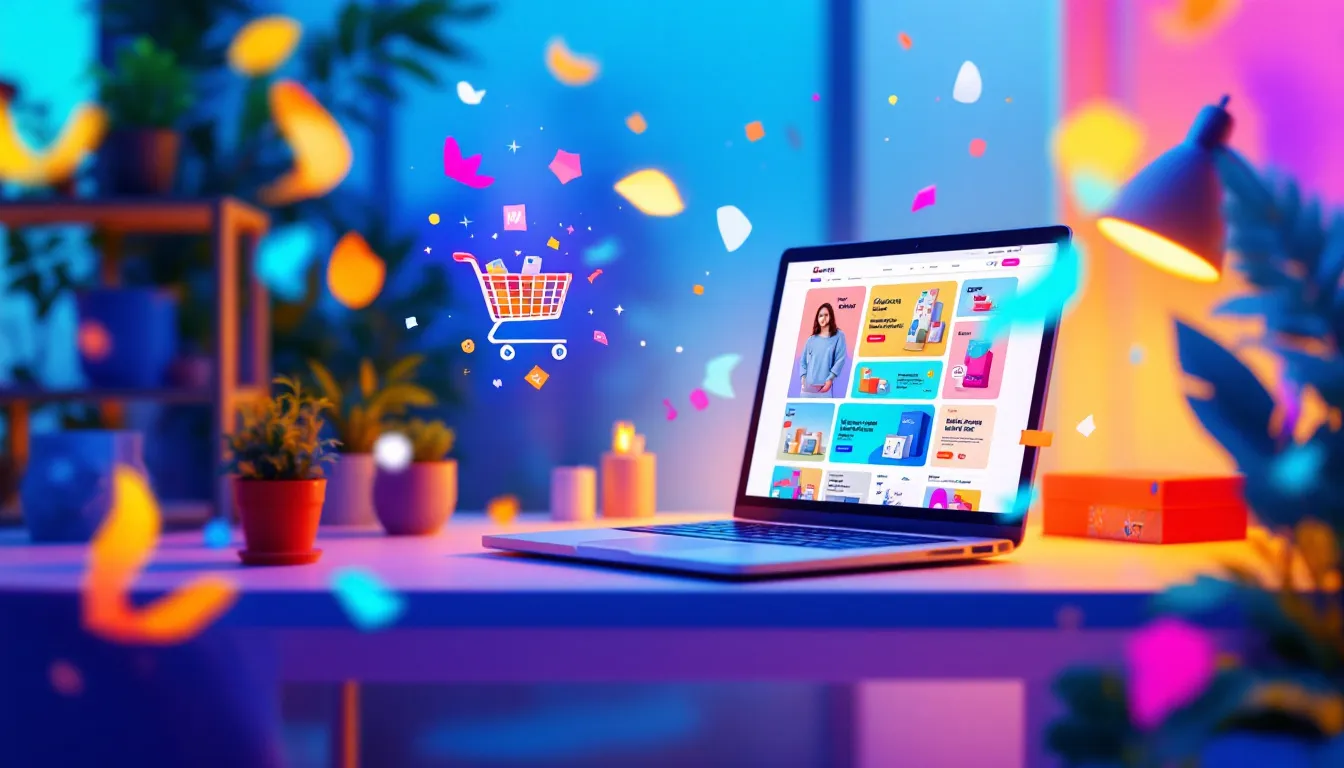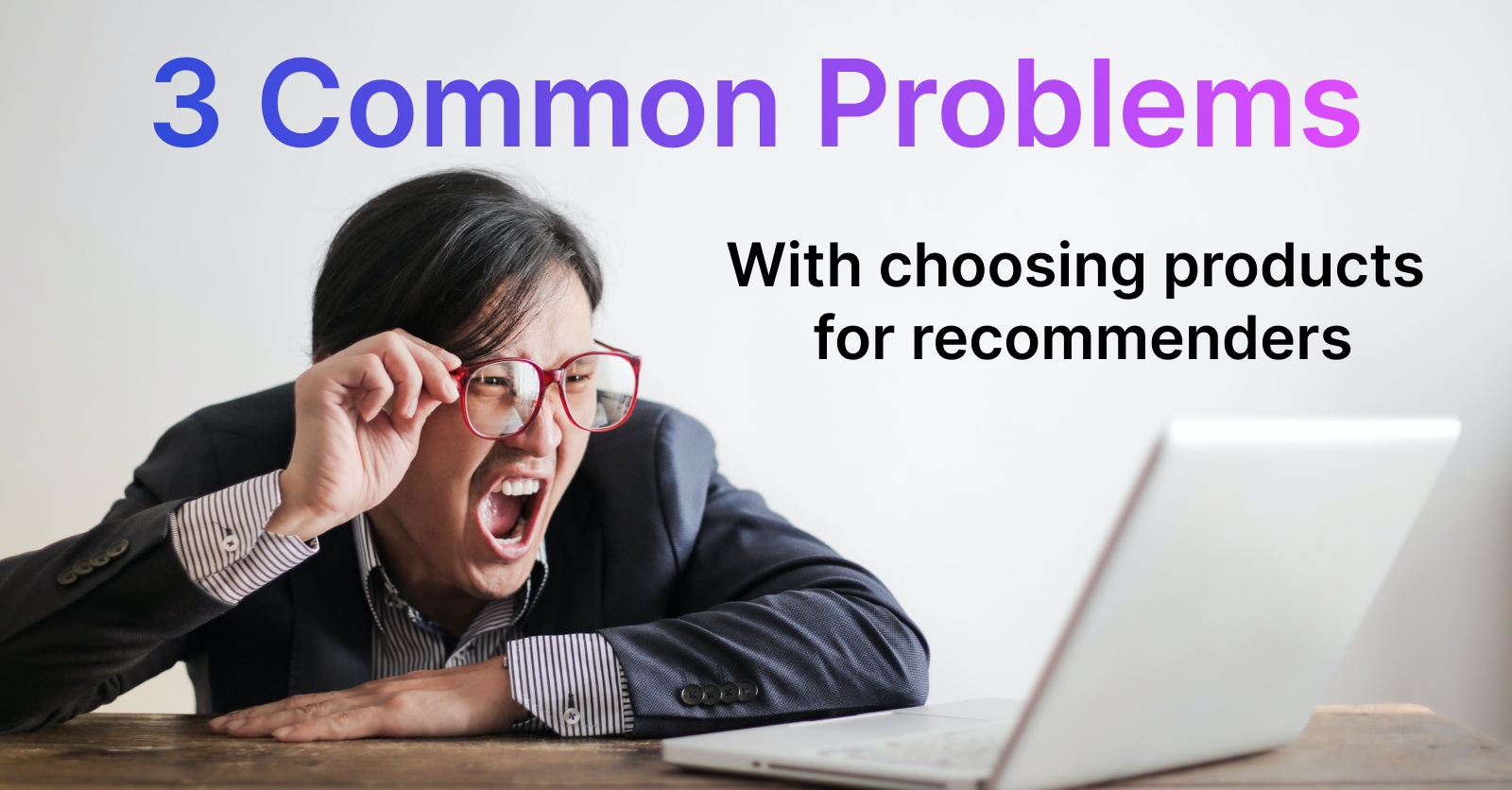Want to boost your email marketing? Here's how personalized product recommendations can help:
- 91% of people are more likely to buy from brands with personalized recommendations
- Companies using advanced personalization see a $20 return for every dollar spent
- Amazon makes a third of their revenue from personalization
Here's how to get started:
- Collect customer data (browsing history, purchases, email engagement)
- Group customers by demographics and behavior
- Use AI to suggest relevant products
- Test and improve your recommendations
Key benefits:
- Higher conversions
- Increased order value
- Better customer retention
| Metric | Improvement |
|---|---|
| Open rates | 26% higher |
| Click-through rates | 25-35% better |
| Purchase rate | Up to 11x increase |
Remember: It's all about showing customers you get them and can deliver exactly what they need.
What Are Personalized Product Recommendations?
Personalized product recommendations are suggestions tailored to individual customers. They use data and algorithms to show products a customer is likely to buy.
How Recommendation Systems Work
These systems collect and analyze customer data to make educated guesses about what products someone might like. They look at:
- Browsing history
- Past purchases
- Time on product pages
- Cart additions
This data creates a unique customer profile, which the system uses to suggest fitting products.
Types of Recommendation Algorithms
There are three main types:
1. Collaborative Filtering
Looks at what similar customers bought or liked. If Customer A and B both bought sneakers, and B also bought socks, it might suggest socks to A.
2. Content-Based Filtering
Focuses on features of products a customer has interacted with. If someone often looks at red dresses, it might suggest other red clothing.
3. Hybrid Systems
Combines both methods for better accuracy.
Benefits for Businesses and Customers
| Businesses | Customers |
|---|---|
| Higher conversions | Easier product discovery |
| Increased order value | Relevant suggestions |
| Better customer retention | Time-saving shopping |
Real-world examples:
- Sephora uses past purchases and browsing behavior for tailored suggestions.
- Best Buy promotes items often bought together.
- Orlebar Brown saw 6.59% sales increase with recommendations in cart abandonment emails.
- Buyagift got a 24% sales boost from personalized recommendations in newsletters.
"Personalized product recommendations not only make shopping more enjoyable but also contribute to customer loyalty." - Bloomreach
56% of customers are more likely to return to sites with recommendations. With 80% more likely to buy from brands offering personalized experiences, tailored recommendations are key in e-commerce.
Setting Up Personalized Recommendations
Want to boost your email marketing with personalized product recommendations? Here's how to get started:
Collect Customer Data
You need to know your customers to recommend the right products. Here's what to track:
- How they use your website
- What they've bought before
- Which emails they open and click
- Their preferences (ask them directly!)
Duolingo does this well. They track user progress and send reminder emails to inactive users, nudging them back to the app.
Group Your Customers
Once you've got the data, split your audience into groups. Think about:
- Who they are (age, gender, location)
- What they do (browsing habits, how often they buy)
- What they like (product categories they view)
This lets you send emails that hit the mark. For example, you could target "Women over 30 who shopped last Mother's Day" with a special promotion.
Use AI to Recommend Products
AI can crunch your data and suggest products your customers will love. Here's how to use it:
1. Pick an AI tool that works with your current setup and can handle your data.
2. Feed your customer data into the AI.
3. Use the AI's suggestions in your emails.
"AI can potentially lower client acquisition costs by up to 50%." - Salesforce Research
Key Parts of Good Product Recommendation Emails
Writing Better Subject Lines
Your subject line can make or break your email. Here's how to nail it:
- Keep it short (5-7 words)
- Use the customer's name
- Create curiosity
- Highlight benefits
- Avoid spam words
| Good | Bad |
|---|---|
| "Mary, check out these hand-picked looks" | "AMAZING DEALS INSIDE!!!" |
| "Based on your last purchase..." | "Limited time offer - Act now!" |
| "Discover more of what you love" | "Free gift with every purchase" |
Designing Clear and Appealing Emails
Make your recommendations shine:
- Use high-quality images
- Keep it simple
- Make it mobile-friendly
- Include clear call-to-action buttons
"92% of people prefer buying from websites with good-looking design. The same applies to emails." - SuperOffice
When and How Often to Send Emails
Timing matters:
- Best days: Tuesday and Friday
- Best time: Around 11 AM
- Frequency: 10-19 emails per month for B2C (average 12.17)
But every audience is different. Try these:
- Set up a preference center
- Survey your list
- Watch your metrics (unsubscribes over 0.5%? Time to adjust)
| Email Type | Suggested Frequency |
|---|---|
| Newsletters | 1-4 times per month |
| Product Recommendations | 3-4 emails per series |
| Abandoned Cart | 1-3 emails over 24-72 hours |
How to Start Using Personalized Product Recommendations
Want to boost sales and engagement? Here's how to kick off personalized product recommendations in your emails:
Set Up Your System
1. Collect data:
- Track browsing history
- Record purchases
- Monitor email engagement
2. Segment your audience
3. Create recommendation rules:
- "Bought X? You'll love Y!"
- "Based on your recent views..."
- "New stuff you might like"
4. Design templates with recommendation spaces
5. Test with a small group first
Test and Improve
Start small:
1. Send a test to 10% of your list 2. Compare to regular emails 3. Tweak based on click-throughs, conversions, and revenue
"One merchant's browse abandonment emails jumped from 17% to 29% click-through rate after adding personalized recommendations."
Keep tweaking:
- Try different algorithms
- Test 3-12 product recommendations
- Adjust email frequency
Remember: It's all about what works for YOUR customers. Keep testing and improving!
Advanced Ways to Use Personalized Recommendations
Let's dive into some smart tactics to supercharge your email marketing with personalized product recommendations:
Suggesting Related Products
Don't just recommend random stuff. Show items that go well with what customers have bought or looked at. This can bump up sales and make customers happier.
Chemist Warehouse nails this. They remind customers to restock products they've bought before and suggest related items. They also add a clear "Pre-order Now" button, making it a breeze for customers to buy.
Changing Email Content Automatically
Use dynamic content to keep your emails fresh, even if they're opened days later. This keeps your messages on point, no matter when they're read.
Brooks, the athletic wear folks, does this like a pro. They switch up email images and text based on local weather. So their content always fits what the customer is experiencing.
Sending Emails Based on Customer Actions
Set up emails that fire off when customers do (or don't do) specific things. This can really boost engagement and sales.
Here's a quick guide:
1. Spot key actions: Think cart abandonment, product views, or account inactivity.
2. Craft targeted messages: Write emails that speak directly to what the customer did (or didn't do).
3. Set up triggers: Use your email tool to send these messages automatically when the action happens.
4. Keep improving: Watch how they perform and tweak as needed.
A classic example? Sending a personalized email to someone who left stuff in their cart. Show them what they forgot, maybe throw in a small discount, and make it super easy to buy.
Checking How Well Your Recommendations Work
Want to know if your personalized email strategy is worth it? Here's how to track your success:
Key Metrics to Watch
Focus on these numbers:
| Metric | What It Means | Why It's Important |
|---|---|---|
| Conversion Rate | % of people who buy | Shows if recommendations lead to sales |
| Average Revenue Per User | Money made per customer | Tells you if personalization boosts spending |
| Click-Through Rate | % of people who click links | Measures if recommendations are interesting |
| Customer Lifetime Value | How much a customer spends over time | Helps you see long-term impact |
Tools You'll Need
- Google Analytics: See what happens after email clicks
- Email provider stats: Check opens, clicks, and sales
- CRM software: Connect email actions to sales data
Making It Better
1. Try A/B tests: Compare different recommendation styles
2. Ask customers: What do they think about your recommendations?
3. Check often: Look at your numbers weekly or monthly
4. Learn from others: What are successful companies in your industry doing?
"We redesigned our cross-sell flow at Bear Mattress using VWO. We personalized recommendations based on what people bought before. This simple change boosted our revenue by 16%", said a Bear Mattress exec.
Solving Common Problems with Personalized Emails
Personalized emails can boost sales, but they're not without challenges. Let's tackle the main issues:
Keeping Customer Information Safe
Data protection is a must. Here's how to do it:
- Use strong encryption for stored data
- Limit data access to essential team members
- Update your privacy policy regularly
- Get clear consent before collecting data
Pro tip: Treat all personal data as sensitive. It keeps you safe and builds trust.
Avoiding Overly Personal Emails
There's a fine line between helpful and creepy. Stay on the right side:
| Do | Don't |
|---|---|
| "Check out these popular items" | "We saw you looking at these exact products" |
| "You might like this" | "Based on your recent purchase of X" |
| "New arrivals in your favorite category" | "Since you bought Y last week" |
Keeping Your Brand Consistent
Don't let personalization change your brand voice:
- Create a style guide for personalized content
- Use the same tone across all emails
- Keep your visual branding consistent
Remember Target and Pinterest's mishaps? Target sent baby product coupons to a teen girl, while Pinterest congratulated single women on non-existent weddings. Both led to upset customers and bad press.
To avoid such blunders:
1. Double-check your data: Make sure it's accurate and up-to-date.
2. Use humor carefully: It can soften personalization, but test it first.
3. Offer easy opt-outs: Let customers control what data you use.
What's Next for Personalized Product Recommendations
The future of personalized product recommendations in email marketing is about to get a whole lot smarter. Here's what's coming:
AI That Knows What You Want Before You Do
AI is getting scary good at predicting what customers will buy. It looks at what you've bought before, what you've been browsing, and even how you behave online.
Talk to Your Email (Yes, Really)
By 2024, you might be chatting with your inbox. Voice tech is coming to email recommendations.
Imagine this:
| What You Can Do | How It Works |
|---|---|
| Ask about sales | Just speak to your email |
| Hear about products | Your email reads recommendations out loud |
| Buy stuff with your voice | Say "buy it" and it's yours |
Try Before You Buy (Kind Of)
AR is bringing products to life in your inbox. It's like having a virtual fitting room or showroom right in your email.
You could:
- See how clothes look on you without trying them on
- Check if that couch fits in your living room
- Watch a product demo without leaving your inbox
HubSpot's working on AI for email subject lines. Expect similar cool stuff for product recommendations soon.
"AI isn't magic. But use it right, and your good campaigns can become great." - Some smart person at Klaviyo
Bottom line: If you're in email marketing, keep your eyes on this stuff. It's how you'll keep your emails fresh and your customers clicking.
Conclusion
Email marketing with personalized product recommendations is a game-changer. Here's why:
1. Customers crave it
People want emails that feel tailor-made:
- 76% get annoyed by non-personalized emails
- 56% are more likely to buy again from sites with relevant suggestions
2. It delivers results
Personalized emails pack a punch:
| Metric | Boost |
|---|---|
| Open rates | 26% higher (personalized subject lines) |
| Click-through rates | 25-35% better |
| Purchase rate | Up to 11x increase (Yves Rocher's case) |
3. AI makes it doable
Tools like Klaviyo can:
- Predict next purchases
- Optimize send times
- Flag at-risk customers
4. The future looks bright
On the horizon:
- Voice-controlled recommendations
- AR product "try-ons" in your inbox
- AI that anticipates your needs
Bottom line: Personalized product recommendations in emails are a must. It's not just about using names anymore – it's about showing customers you get them and can deliver exactly what they need.
FAQs
How to use personalization in email marketing?
Here's how to personalize your email marketing:
1. Use names: Put the subscriber's name in the subject line. It can boost open rates by 26%.
2. Segment your list: Group subscribers by demographics, behavior, or preferences.
3. Use dynamic content: Change email content based on subscriber data. Adidas does this with product promotions.
4. Set up automation: Create triggered emails based on user actions. These get 152% higher open rates than regular emails.
5. Personalize recommendations: Use AI to suggest relevant products. Amazon makes 35% of their retail revenue this way.
What is a personalised email?
A personalized email is tailored to the recipient using your data about them. It can be:
| Level | Example |
|---|---|
| Basic | Using the recipient's name in the subject |
| Intermediate | Changing content based on demographics or purchases |
| Advanced | AI product recommendations or dynamic content |
Converse adds first names to subject lines. Dropbox includes the subscriber's company name in emails.
Fun fact: 80% of consumers are more likely to buy from brands with personalized experiences. But only 5% of companies do extensive personalization. There's room for improvement!





